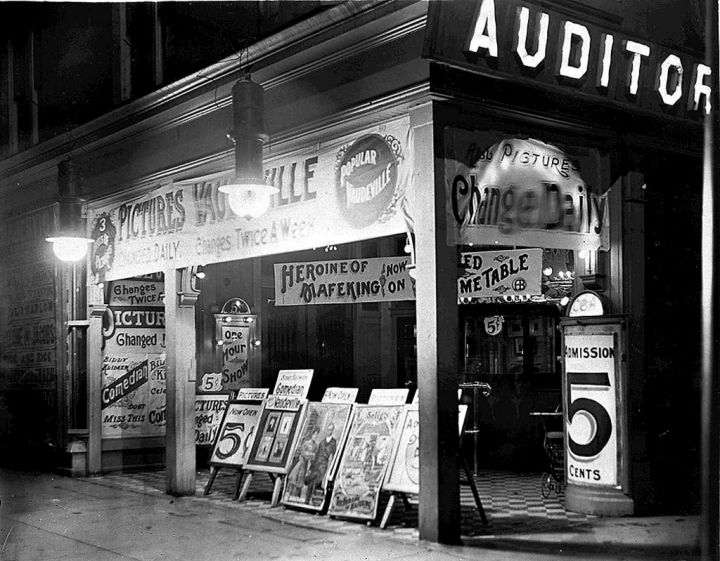
In 1901 Vaudeville actors went on strike and theaters were left looking for another source of entertainment to fill their halls. Short films, usually about a minute long had been shown at the end of the Vaudeville acts but proved to be an expensive investment because they had to be purchased from factories. The films were not changed very frequently due to this expense. In 1902 Henry Miles of San Francisco began renting films which became the basis of our current film industries film distribution methods.
In 1902 the first theater devoted solely to films opened. The Electric “Theater” in Los Angeles was actually a tent. The first screening included a short called New York in a Blizzard. Admission cost about 10 cents for a one-hour show. Nickelodeons developed soon after, offering both movies and live acts.
The first store front moving pictures theater in the world was opened in Pittsburgh in 1905 by Harry Davis and John P. Harris in the Howard Block, west side of Smithfield street, between Diamond and Fifth avenue. They called the theater a “Nickelodeon” named for a combination of the admission cost and the Greek word for “theater”.
The “Nickelodeon” opened at 8 o’clock in the morning and the reels were continuously run until midnight. A crowd of people were always waiting for their turn inside the theater. There were fewer than 100 seats. Nearly 7000 people were entertained every day. Admission was of course a nickel. Because the projector used in the theater at this time required complete darkness to properly show the image on the screen, the inside of the theater was pitch black. People of all ages were kept entranced by this new “moving picture” phenomenon.

Shows usually opened with a popular song of the day followed by several shorts or a feature length film. The films were accompanied by musicians and the orchestra often imitated the sounds of the activities that were happening on the screen, like crashes, thunder, buildings getting blown up. The orchestra also played a large variety of music styles for the entertainment of the audience. The films were many of genres as well – comedy, melodrama, western, slapstick and more. Films changed 3-4 times per week to keep people coming back. This humble theater was the template for movie theaters that soon covered the country. By 1910 there were 10,000 nickelodeon theaters in the United States.


